Term archive

投稿タイプ:column
Discover Unique Sake Breweries Across Kyoto
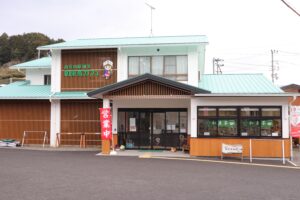
投稿タイプ:restaurants
Wazukacha Cafe
In the center of town visitors will find the Wazaukacha Cafe, near the Wazuka Yamanoie bus stop. This facility doubles as an inviting cafe and a visitors center, providing sightseeing maps and information for travelers. They also have a shop selling local goods and over four hundred tea items. This is a great spot to pick up some single origin Wazuka tea, allowing you to savor the rich taste of an individual farm instead of a typical mass-produced blend from multiple fields. Rental bikes are available for 1,100 yen per day. Breezing through the hillside scenery is enjoyable in any season.
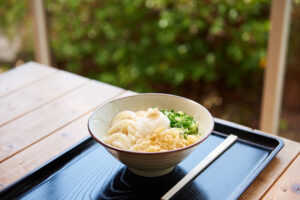
投稿タイプ:restaurants
Tanaka-ya Udon: Ide-cho Main Shop
While this is a casual udon restaurant that runs on a self-service basis, the amazing quality of its dishes is evident as soon as you take a bite. The chewy and springy noodles and the deep and flavorful soup stock are so delicious that you will eat them right up.
Here, the udon noodles are made from 9 pm to 1 am, when the temperature is the most stable. For the soup stock, which the restaurant begins brewing at 6 am, four types of dried and fermented fish and Risiri kelp are used, and dried bonito shavings are added for flavor. The water that is essential for both the udon and soup stock is soft acidic water that is produced through many processes.
The most popular Bukkake Udon, the Kasu Udon that is rare in Kyoto, and the Saikyo Udon that is characteristic of Kyoto are highly recommended here.
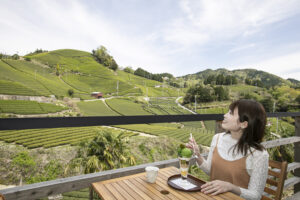
投稿タイプ:restaurants
dan dan cafë
This is a cafe where you can enjoy the view of Wazuka-cho’s most famous "Ishitera Tea Fields."
In order to enjoy this view at a leisurely pace, this cafe was opened by a woman who worked in the restaurant business and her younger brother who is a town resident and the owner of the land.
At the cafe, the menu includes handmade lunches prepared one by one, curry, omelet with rice, Wazuka tea, gelato made with seasonal fruits (can be purchased for takeout), and parfait.
* For lunches, ordering in advance is recommended.

投稿タイプ:sightseeing
Asahiyaki Pottery
The pottery that is an Uji original comes from the Asahiyaki establishment on the eastern bank of the Uji River. For over four hundred years and sixteen generations. Entering the Asahiyaki gallery is a step into a world of refinement and elegance. Each of the pieces here has passed through the white-hot fire of the kilns in the Asahiyaki factory nearby. Works by the current master potter are for sale - priced for serious collectors - but a variety of affordable options are on display as well. For a more in-depth look at the Asahiyaki process, enter the factory itself and take part in a pottery class taught by a craftsman.
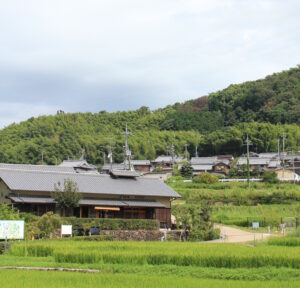
投稿タイプ:sightseeing
Ide Machizukuri Center Tsubakizaka
This is a place for relaxation and refreshment along Yamashiro Kodo. Commonly known as "Tsubaki-zaka," this exchange hub of Ide-cho has a porch and a sunken fireplace, and is a space where you can spend some time in peace.
Nearby, there are also the Jizozen-in Temple and Ono no Komachi Zuka, where the cherry blossoms are magnificent. Many people travel to and from this place as a resting area when hiking on Yamashiro Kodo, and fond times are spent here.
Various pamphlets, maps of Yamashiro Kodo are also available.
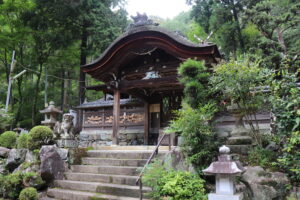
投稿タイプ:sightseeing
Tamatsuoka Shrine
This shrine was reportedly built as a clan temple by Tachibana no Moroe in 731.
The precinct covered with overgrown trees is filled with cool air even on midsummer days, which creates a dark green shade.
The main hall of the shrine has a Kasuga-zukuri style and was rebuilt in 1687. In the precinct, there is the Tachibana Shrine, which is dedicated to Tachibana no Masashige, a descendent of Tachibana no Moroe.
In the adjacent Jizozenin Temple, there is a weeping cherry tree that is selected as one of the ten famous trees and a natural monument of the prefecture.
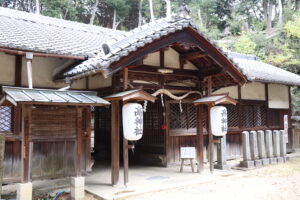
投稿タイプ:sightseeing
Taka Shrine
The Sacred Forest of Taka-Jinja Shrine has been selected as one of the 100 best scenic spots in Kyoto. Behind it, Taka-Jinja Shrine stands quietly. The main hall of the shrine was built in the Momoyama period and is a cultural property designated by Kyoto Prefecture. With its glamorous decorations, the main hall distinctly features the architectural trends of the Momoyama period, and has been a place of worship for people who live in Tagago since ancient times.
Also, documents from Taka Shrine that date back to the Kamakura period (1185-1333) state that the theatrical art form known as Sarugaku (later referred to as the famous Noh) was performed as an offering to the shrine. Therefore, Taka Shrine carries the important significance of being the place with the first record of Sarugaku in Japan.
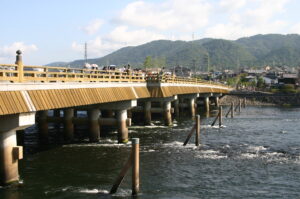
投稿タイプ:sightseeing
Uji Bridge
This bridge was reportedly first built in 646 by Doto, who was a monk at the Gango-ji Temple in Nara. It is considered one of the three old bridges in Japan, alongside "Seta Karahashi Bridge" and "Yamazakibashi Bridge."
The current bridge was completed in March 1996, and it features bronze ornamental caps along its balustrade made of Japanese cypress. With this, the historical image of Uji Bridge is retained and the design harmonizes with the surrounding landscape.
Overhanging from the side of the bridge that faces upstream, there is an area called "San no Ma," which is said to be the remnant of the guardian deity "Hashihime," as well as a place where Toyotomi Hideyoshi drew water for his tea ceremonies. From here, the view upstream is superb. (Japanese Heritage)
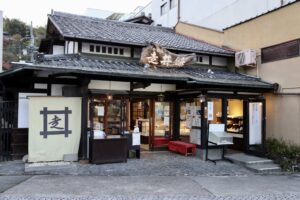
投稿タイプ:sightseeing
Hashirii Mochi
This is an old store that was established over 250 years ago, and it is located in front of Ichi no Torii (the first torii gate) at the foot of Iwashimizu Hachimangu Shrine. The store is famous for its "Hashirii-mochi rice cakes," which are made by wrapping strained bean paste in soft Habutae-mochi rice cakes.
When founded in Otsu in the middle of the Edo period in 1764, the founder Iguchi Ichirou Uemon Masakatsu started business by making anmochi-rice cakes using the "Hashirii" spring water. Hashirii spring water was so famous that it was even used for Emperor Seimu’s first bath. Hashirii-mochi rice cakes are shaped after a sword, in honor of the story of Sanjo no Kokaji Munechika, who was a swordsmith in the Heian period who forged his inscribed sword in Hashirii spring water.
At the adjoining cafe, you can enjoy the rice cakes with some matcha and sencha green tea sourced from Yawata.

投稿タイプ:pamphlets
TRAVEL GUIDE KYOTO ~Discover your own Kyoto~

投稿タイプ:column